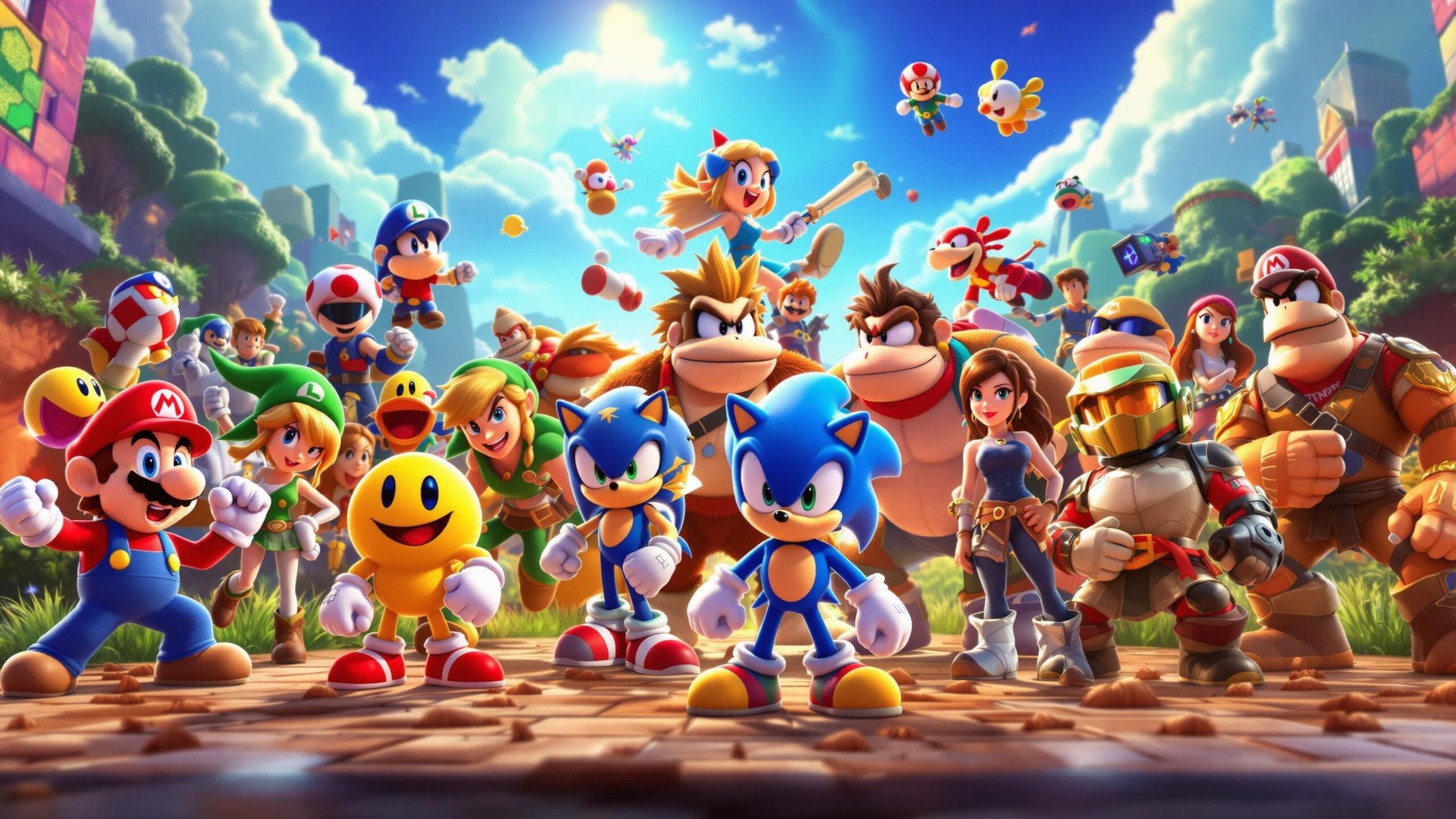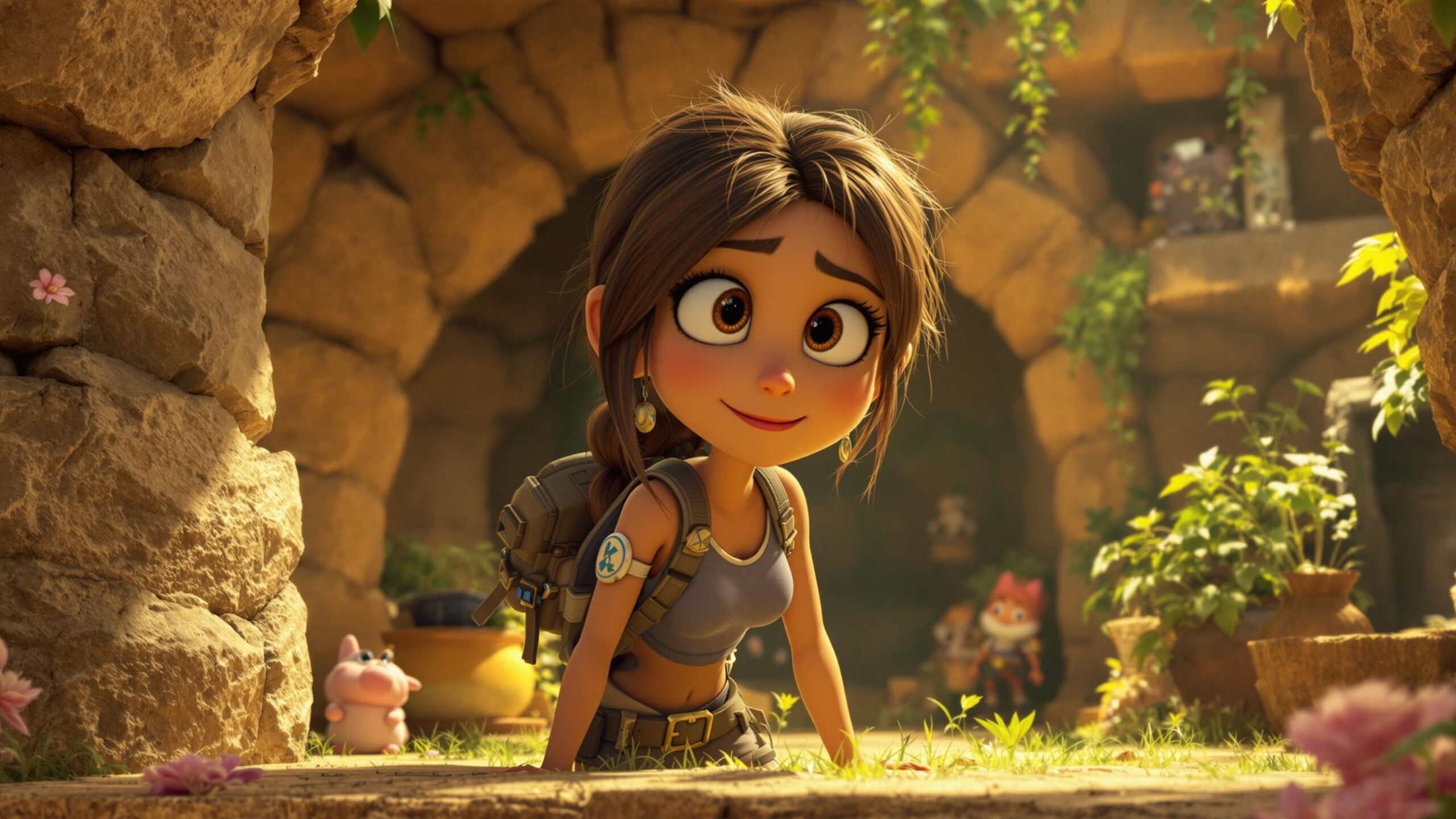Before motion capture, cinematic cutscenes, and open-world epics, there were pixelated heroes with simple goals: rescue the princess, beat the boss, save the world. These characters didn’t need elaborate backstories or Hollywood voice actors to become icons—they had charm, challenge, and unforgettable gameplay mechanics. The golden era of classic video games forged a foundation for the medium, and its most legendary characters remain etched into gaming history. They became the faces of consoles, the stars of franchises, and the reason millions fell in love with gaming in the first place. Whether you’re a seasoned retro gamer or just diving into gaming’s roots, these ten classic characters represent the best of the best. Their influence extends beyond the screen—into merchandise, pop culture, and the very DNA of modern gaming. These are the trailblazers, the mascots, the pixel-perfect pioneers who shaped the world one 8-bit adventure at a time.
#10: Mega Man (Mega Man series)
Mega Man, known as Rockman in Japan, debuted in 1987 with a simple premise that became endlessly addicting: defeat robot masters, absorb their powers, and move to the next challenge. Blue armor, an arm cannon, and that iconic side-scrolling action quickly became Capcom’s signature. What made Mega Man stand out was the strategy involved in choosing the order of bosses. Each villain had a weakness, and figuring out the right power to use gave players a puzzle to solve amidst the chaos. Mega Man’s visual style and chiptune soundtrack are forever tied to the NES era, but his legacy continued with sequels, spin-offs like Mega Man X, and appearances in crossovers like Super Smash Bros. He represented something greater than a robot—he was a symbol of perseverance, adaptability, and trial-and-error mastery. Even as gaming evolved, the challenge and charm of Mega Man remained timeless.

#9: Pac-Man (Pac-Man series)
Pac-Man isn’t just a video game character—he’s a global cultural icon. Introduced in 1980, Pac-Man brought color, charm, and accessibility to arcades at a time when shooters dominated the scene. The game’s maze structure, ghost enemies, and power pellets created a formula that was both simple to learn and difficult to master. Pac-Man’s enduring popularity led to an animated TV show, hit merchandise, and even a hit single on the Billboard charts. But more than his commercial success, Pac-Man proved that character design mattered. That little yellow circle with a mouth had personality—even without dialogue or a backstory. As gaming transitioned to home consoles, Pac-Man remained a staple, showing up on every major platform in some form. His enduring appeal lies in his universal design: everyone knows Pac-Man, and everyone has a Pac-Man story. He’s a symbol of gaming’s early magic.

#8: Donkey Kong (Donkey Kong series)
Donkey Kong made his first appearance not as a hero, but as the villain—rolling barrels down a construction site to stop Jumpman (later known as Mario). That 1981 arcade game was revolutionary, not just for its gameplay but for introducing characters with distinct personalities. Donkey Kong would go on to evolve, starring in his own platformers and redefining his role from antagonist to lovable hero. Games like Donkey Kong Country showcased his strength, agility, and jungle flair with groundbreaking graphics and soundtracks. DK became a flagship figure for Nintendo, appearing in party games, kart racers, and brawlers. His transformation from villain to icon is one of gaming’s greatest turnarounds. He’s not just a brute—he’s a symbol of legacy, adaptation, and a bridge between old-school arcade action and modern console flair.
#7: Sonic the Hedgehog (Sonic series)
Created to rival Mario, Sonic was Sega’s bold answer to Nintendo’s platforming dominance. Fast, edgy, and wrapped in attitude, Sonic burst onto the scene in 1991 with blue spikes and red shoes, collecting rings and blazing through zones at breakneck speed. His debut title on the Sega Genesis was a revelation—both visually and sonically (no pun intended). Sonic’s personality, speed-based gameplay, and vibrant worlds made him a hit with younger gamers seeking something cooler than Mario. He quickly became the face of Sega, spawning cartoons, comics, and a franchise that still runs strong today. Despite ups and downs in game quality, Sonic’s cultural status has never waned. He’s the personification of early ’90s gaming rebellion, and his influence helped shape the rivalry that pushed video games forward. Sonic isn’t just a mascot—he’s a movement.
#6: Link (The Legend of Zelda series)
Link, the silent hero of Hyrule, has been wielding the Master Sword and solving dungeons since 1986. With green tunic, shield, and courage to spare, Link is the player’s vessel in a series that combines action, puzzle-solving, and epic storytelling. What makes Link so compelling is how each game reshapes him—sometimes a child, sometimes a warrior, sometimes even a cartoon or a shadow—but always brave, always determined. He never speaks, yet fans know exactly who he is. His quest to rescue Princess Zelda and defeat Ganon transcends pixels, becoming mythic in scope. Titles like Ocarina of Time, Breath of the Wild, and A Link to the Past aren’t just great games—they’re cultural landmarks. Link embodies the timeless allure of adventure. He’s a legend not because he talks, but because he acts. Through him, players learn that heroism isn’t about noise—it’s about action, heart, and enduring spirit.
#5: Lara Croft (Tomb Raider series)
Lara Croft broke barriers and raised eyebrows when she debuted in 1996’s Tomb Raider. A gun-wielding British archaeologist with brains, brawn, and iconic dual pistols, Lara quickly became a gaming superstar—and one of the first female leads to headline a blockbuster franchise. While her early polygonal appearance was often criticized for being oversexualized, Lara evolved into a complex, multidimensional character across sequels and reboots. Whether exploring ancient ruins or facing supernatural threats, Lara blended exploration with puzzle-solving and third-person combat in a way few games had before. Her impact went beyond gameplay: she became a pop culture force, starring in films, comics, and spin-offs. More importantly, she helped pave the way for strong female protagonists in gaming, long before it was industry standard. The 2013 reboot further grounded her character, showcasing vulnerability and grit in equal measure. Lara Croft is more than a relic hunter—she’s a symbol of growth, both for herself and for the gaming industry as a whole.
#4: Samus Aran (Metroid series)
Samus Aran’s reveal at the end of the original Metroid in 1986—that the bounty hunter behind the suit was a woman—remains one of the greatest twists in gaming history. But her legacy goes far beyond a surprise ending. Samus is a lone warrior in a haunting universe, exploring alien worlds and battling space pirates and parasitic organisms like the Metroid. Her games defined the “Metroidvania” genre, mixing exploration, platforming, and backtracking into a rewarding gameplay loop. She’s silent, stoic, and endlessly capable, making her a unique force in a medium where women were often sidekicks or damsels. Samus’s power suit, arm cannon, and morph ball set her apart visually and mechanically, giving players a deeply immersive sci-fi experience. Titles like Super Metroid and Metroid Prime are genre-defining works, and Samus remains their steadfast anchor. She’s a quiet trailblazer—deadly, efficient, and iconic in every way.
#3: Master Chief (Halo series)
When Halo: Combat Evolved launched in 2001, it didn’t just sell Xbox consoles—it gave the world a new kind of hero. Master Chief, or John-117, is the armored supersoldier who became the face of Microsoft’s gaming empire. With his green Mjolnir armor and silent resolve, Master Chief carried humanity’s fight against the alien Covenant with unshakable resolve and just a hint of melancholy. Despite being mostly faceless and reserved, he struck a chord with players who saw in him the perfect sci-fi protagonist: strong, loyal, and determined. His partnership with the AI Cortana added emotional depth, showing that even a Spartan has feelings. The Halo series’ scale, storytelling, and multiplayer legacy cemented Master Chief as a generation-defining figure. He’s not flashy or verbose—he simply gets the job done. And in the world of classic gaming heroes, that stoic commitment to duty is what makes him unforgettable.
#2: Luigi (Super Mario series)
For years, Luigi lived in his brother’s shadow—literally and figuratively. But over time, the taller, greener Mario brother grew into his own. From Luigi’s Mansion to Mario Kart, Luigi evolved from Player Two to a bona fide star in his own right. He’s the underdog with heart, the awkward hero who fumbles but finds his footing. His jump is a bit higher, his personality more anxious, but that’s what makes him lovable. Luigi’s charm lies in his relatability; he’s not the chosen one, but he still steps up when it matters. And when he does, it’s with heart, humor, and a surprising dose of heroism. The gaming world came to appreciate Luigi not just for his quirks, but for his resilience. In many ways, he’s gaming’s ultimate little brother—always underestimated, yet consistently essential. Luigi’s rise from sidekick to spotlight is one of gaming’s most wholesome journeys.
#1: Mario (Super Mario series)
No surprise here. Mario is the undisputed king of classic video game characters. Since his first appearance as Jumpman in Donkey Kong (1981), Mario has been leaping over Goombas, rescuing Princess Peach, and redefining platformers with each new adventure. His games—Super Mario Bros., Super Mario 64, Super Mario Galaxy—aren’t just popular, they’re milestones in gaming history. With his red cap, blue overalls, and infectious “Let’s-a go!”, Mario became the face of Nintendo and the ambassador of gaming itself. What makes Mario so enduring is his versatility. He’s been a plumber, a kart racer, a party game host, a tennis player, and even a doctor. Yet through every reinvention, he remains quintessentially Mario: joyful, brave, and ready to leap into the unknown. His universality—across generations, platforms, and cultures—makes him more than a mascot. Mario is gaming’s heart. No matter how much the industry evolves, it will always come back to that iconic mustache, those cheerful power-ups, and the sound of him jumping into another world.
These classic video game characters are more than nostalgic callbacks—they’re the architects of a medium. Each of them laid a foundation that modern games still build upon today. From the arcades to the living room, these digital legends taught us what it means to run, jump, fight, explore, and most importantly, play. They’re not just part of video game history—they are video game history. And even decades later, their stories, mechanics, and personalities continue to inspire new generations of gamers around the world.




